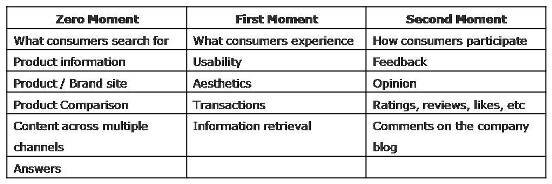articles
A New Era for Marketing; Mobile First
Dr KF Lai, CEO, BuzzCity
0 Comments
Despite the current economy, and the UK sliding into a double dip recession, digital marketing spend continues to increase. With mobile devices being a primary digital access point for many consumers around the world, mobile advertising should not be ignored at the expense of a new kid on the block. It is expected that there will be more smartphones than humans around the world, and with consumers becoming constantly connected via mobile it has a great offering for marketers. If that isn’t enough then surely knowing that mobiles now outsell PC’s is enough for you to reconsider your marketing strategy!
If mobile is not already an integral part of your marketing mix, it should be.
• There are more than 6 billion mobile subscriptions worldwide.
• No, not everyone on this planet has a mobile handset yet. But we're getting close. Forrester Research estimates that 4.3 billion people own at least one handset. That's 3 out of every 5 people on the planet.
• Our network has already seen 36% growth against the first quarter of 2012; and this continues.
• Eleven percent of consumers use their phones for price comparison or to buy products.
• Fourteen percent of consumers want to purchase vacations online, including airline tickets and accommodations. There are a lot of year-end travellers as well who are just now looking to book a Christmas holiday.
• Consumers are using social networking like never before. In fact, it's the most popular activity on mobile. Sixty-one percent of mobile consumers are doing it. The majority of consumers are using their mobile phones to stay constantly connected and updated - in real time - wherever they are - around two thirds (65%) check their emails both before and during travel. Almost three quarters (69%) use their daily commute to listen to music, watch videos or read emails, tweets and status updates from friends via their handsets.
What steps should brands take to incorporate mobile into their marketing strategy?
1. Start with the basics - Know your target audience - Before you start coming up with that great mobile marketing strategy the first step is to know your audience, in particular who the mobile consumer is and not to make assumptions when it comes to the target audience.
Many people make the assumption that teens are the only audience that mobile may appeal to.As our Mobile Lifestyle Survey found recently the audience is actually predominantly male, aged between 18 and 45 yrs (86%). He is digitally-savvy, and immersed in popular culture in all its forms – TV, music, film and fashion. He is highly social, and actively engaged in group-pursuits. He is not a teenager, rather an adult facing a number of crucial life milestones, from changing jobs, to buying a home or car, to starting a family.
By the time they make a purchase, consumers will have read reviews, compared prices and asked around . . . most likely with their mobiles. Merchants need to look at the whole consumer journey to develop a suitable content strategy and determine where best to target their mobile efforts.
2. A Content Strategy – Mobile is unlike any other medium, users are constantly connected, generating or consuming content. Users are in a variety of modes when using a mobile such browsing to pass the time, commuting (seeking entertainment and diversion), communicating (chatting or interacting with social media), or they are looking for something (maps, reference, phone numbers, contact details, etc).
All this makes an appropriate content strategy vital. Your aim is to "be there" for consumers, to provide them with the information they need to make a purchasing decision. And your content strategy will influence how you use the different tools at your disposal - social media, comparison shopping, search engine marketing and mobisites - to assist consumers in their purchasing process.
3. Think outside the box – How can you integrate mobile into other parts of your campaign or how can you interact with users even further?Retailers can secure effective results with a basic approachusing social media and/or inexpensive tools based on opt-in SMS. Retailers and supermarkets are ideal for permission-based mobile text messages associated with their loyalty programmes.
Ultimately with the mobile internet set to overtake desktop in the coming year, brands would be foolish to ignore this vital marketing channel.
About the Author:- Dr KF Lai is co-founder and chief executive officer of BuzzCity, one of world’s leading mobile media companies in the development and marketing of mobile services and entertainment to a global audience. Established in 1999 in Singapore, BuzzCity’s business focuses on two distinct audiences: the newly connected emerging middle class in developing markets and the blue collar sector in developed regions.
Edit
articles
Mobile in the Moment of Truth
Dr Lai Kok Fung, CEO and Co founder, BuzzCity
0 Comments
When does a consumer decide to make a purchase?
Increasingly, this 'moment of truth' is occurring on mobile.
And brands that don't actively use the medium to engage consumers - by providing information and sparking conversations about products, as well as ways to buy them - are under-performing and losing sales.
It's that simple.
The Moment of Truth
A couple years ago, Google and market researcher IRI noticed that some 83% of consumers make purchase decisions before even entering a store. This led Google to coin a new term: the 'zero moment of truth' to describe the impact of internet search and online brand interactions on consumer decision making.
Some Statistics
Seventy-eight percent of mobile users have made a purchase using their phones or a mobile device, according to a BuzzCity survey conducted in 17 countries in 2011.
M-Commerce has yet to become a way of life for most consumers. A sizable portion - some 40% - still prefers to pay for a product in person.
But what we're finding is that large segments of the consumer population are using their phones and tablets to research products and compare prices.
In a survey conducted before Diwali 2012 it was found that 53% in India have purchased (gifts) via mobiles and make price comparisons via:
• Search Engines 47%
• Price comparison & review sites 16%
• Social Media 29%
• Friends' Recommendations 16%
• Advertisements 18%
By the time they make a purchase, consumers will have read reviews, compared prices and asked around . . . most likely with their mobiles. Merchants need to look at the whole consumer journey to develop a suitable content strategy and determine where best to target their mobile efforts.
Mobile and Consumer Decision Making
In a sense, consumers are behaving the same way they have for ages. They perceive a need, seek information, assess the value of a product or service, make a purchase, then use and evaluate it. What has changed is where they collect information and share experiences.
It's really important for advertisers and brands to understand a consumer's decision-making process, so let's take a closer look at it for a moment and see how mobile comes into play:
Step 1: Stimulus and Awareness
Something happens that triggers a consumer's need. A light bulb goes out and needs to be replaced. An ad appears on TV. It's Christmas-time. Your friend tweets about a cool app. This stimulus is often caused or reinforced by advertising. As your consumers take in content in new ways, you need to shift with them. Some services - like dental care or aircon servicing - are also well-suited for SMS alerts that inform clients that it's time to make an appointment.
Step 2: Information and Comparison
Make sure the information that consumers need and which you want them to have is readily available and easy to find. Create a mobile site. Set up a social media page. Place mobile ads that direct consumers to your content. Retailers with online catalogues generally do a good job of assisting consumers on their purchasing journey with precise product information.
A lot of brands have also started creating new mobile sites for specific products, like a new cellphone model or car, to share detailed information, specifications and testimonials. These microsites don't have to be boring - they can also feature games and promotions, as long as the core information is still there. Meanwhile consider online classifieds and listings on comparison sites as well.
Step 3: Purchase Decision
After a consumer has compared prices, read reviews and shopped around, it's time to seal the deal. It's at this point that some brands offer special discount coupons, particularly for needs that are seasonal. Loyalty programmes tend to send opt-in emails and SMS alerts for subscribers. Know your consumers and consider offering new types of awards, for example offering Vodafone users 10% off, in the same way that certain credit card holders are offered discounts.
These first three steps encompass the Zero Moment of Truth.
Step 4: The First Moment of Truth - Purchase
A shopper's first experience for many consumer products is increasingly online and on mobile. Site usability, look & feel and ease of transaction are crucial factors in this first moment. As mCommerce takes centre stage, the key for merchants is to understand consumer payment preferences and to offer secure options. Depending on the item, many consumers are perfectly happy to make a purchase via mobile payment, as long as the system is safe and easy to use. For example, consumers are generally very open to purchasing mobile products, like airtime, with their phones. But when there's a physical store, a lot of customers prefer to make payments in person. Cater to them by offering an option for online and mobile bookings, with payments to be made on site.
Step 5: The Second Moment of Truth - Post Purchase Evaluation
People talk. You need to listen - truly listen - and interact, quickly. Your customers email questions, post to social media and call your contact centre, all from their phones.
The Bottom Line
Create a consistent experience across all channels, including mobile, if you want to retain customers and grow revenues. Consider these factors as you develop a content strategy
In the age of mobile media, the Zero Moment of Truth is more important than ever. Your aim is to "be there" for consumers, to provide them with the information they need to make a purchasing decision. And your content strategy will influence how you use the different tools at your disposal - social media, comparison shopping, search engine marketing and mobisites - to assist consumers when they first become aware of a need.
About the Author:-
Dr KF Lai is co-founder and chief executive officer of BuzzCity, one of world’s leading mobile media companies in the development and marketing of mobile services and entertainment to a global audience. Established in 1999 in Singapore, BuzzCity’s business focuses on two distinct audiences: the newly connected emerging middle class in developing markets and the blue collar sector in developed regions.
Most Viewed Articles
When does a consumer decide to make a purchase? Increasingly, this 'moment of truth' is occurring...
2012 was an exciting year for Indian e-commerce, which capped off an incredible 5 years of...
Retargeting, also known as remarketing is proving to be the new exciting phenomenon in...












